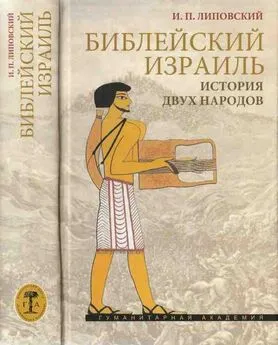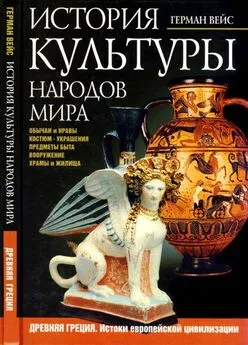Игорь Липовский - Библейский Израиль. История двух народов
- Название:Библейский Израиль. История двух народов
- Автор:
- Жанр:
- Издательство:Гуманитарная Академия
- Год:2010
- Город:Санкт-Петербург
- ISBN:978-5-93762-066-8
- Рейтинг:
- Избранное:Добавить в избранное
-
Отзывы:
-
Ваша оценка:
Игорь Липовский - Библейский Израиль. История двух народов краткое содержание
Книга известного востоковеда, профессора Бостонского университета И. П. Липовского посвящена наиболее загадочным и дискуссионным событиям библейской истории. На основе тщательного анализа ветхозаветных и древневосточных источников автор делает вывод о значительных культурно-исторических различиях между двумя группами древнееврейских племен — северными и южными коленами, что позволяет ему представить совершенно новый взгляд на происхождение древнего Израиля, эпоху патриархов, пребывание евреев в Египте, Исход, а также на завоевание евреями Ханаана.
Охватывая в своем фундаментальном исследовании период почти в полторы тысячи лет — от патриарха Авраама до разрушения первого Иерусалимского Храма, И. П. Липовский находит подтверждение многим фактам, изложенным в Библии, и в то же время его труд лишний раз доказывает, что подлинная история всегда оказывается несравненно богаче и многограннее, чем ее отражение даже в самых великих литературных памятниках.
Написанная живым, увлекательным языком книга адресована как специалистам — историкам, востоковедам, религиоведам, культурологам, так и всем интересующимся древней историей.
Библейский Израиль. История двух народов - читать онлайн бесплатно полную версию (весь текст целиком)
Интервал:
Закладка:
Эглон, правитель моавитян в период судей — 219, 252
Эзра (Эздра), законоучитель иудейского народа в послевавилонский период — 9, 496, 520
Эйла, израильский царь — 323
Эйман, левитский род — 519
эймим — см. рефаим
Эйн-Геди (Хацецон-Тамар), оазис на юго-западном побережье Мертвого моря — 177, 390
Эйн-Дор (Ен-Дор), древний ханаанский город в центральной Палестине — 203
Эйна, город в Сирии — 427
Эйтам, иудейский город — 382
Экрон, филистимский город на юго-западе Палестины — 180, 197, 238, 422, 430
Элам, царство на юго-востоке от Месопотамии — 20, 364, 367, 422, 441, 451, 465, 470
Элефантина, остров на реке Нил в Верхнем Египте — 139, 487, 500
Эли (Илий), первосвященник из Шило (Силома), глава северной левитской династии — 224, 230, 239, 244, 259, 260, 264, 511, 513, 514
Элифаз, сын родоначальника Эдома и отец Амалека — 160
Элицафан, левитский род — 519
Элиша (Елисей), израильский пророк, ученик Илии — 332, 334, 336, 337, 351, 395, 405, 521, 522, 533
Элиэзер, домоправитель патриарха Авраама — 50
Элиэзер, иудейский пророк при дворе царя Йеошафата — 392
Элон Морэ, религиозное святилище, сооруженное Авраамом в центральной Палестине — 30
Элоней Мамрэ, место стоянки Авраама в южной Палестине — 30, 35
«Элохист» (Е), тексты Пятикнижия, созданные в Северном царстве (Израиль) — 9, 292, 531
Эль, верховный бог ханаанского пантеона — 31, 135, 310, 529, 530, 531, 534–536
Эльазар, первосвященник в период завоевания Ханаана, сын Аарона — 168, 169, 191, 192, 195, 206, 215, 222, 227, 241, 369, 510
Элькана, отец судьи и пророка Самуила — 248
Эл(ь)теке, место сражения между ассирийцами и египтянами в юго-западной Палестине — 423
Эль Шаддай, Бог Всесильный, один из эпитетов верховного ханаанского бога Эля — 30, 534
Эль Эльон, Бог Всевышний, один из эпитетов верховного ханаанского бога Эля — 31, 152, 194, 531, 534
Эсав (Исав), старший сын патриарха Исаака, родоначальник эдомитян — 15, 38–44, 51, 53, 56, 57, 59, 61, 160, 183, 184, 275, 280, 490, 525, 526
Этбаал, царь финикийского города Сидон — 326
Эфраим (Ефрем), важнейшее древнееврейское племя, лидер северных колен — 47, 49, 57, 61, 90, 96, 98, 189, 203, 215, 221, 226, 229, 231, 239, 240, 262, 272, 273, 285, 296, 302, 306, 317, 318, 322, 353, 354, 362, 370–372, 377–379, 404, 414, 420, 421, 450, 493, 512, 516–518, 536
Эфрайин, город в центральной Палестине в области колена Биньямин — 383
Эфрат — см. Вифлеем
Эфрон, сын Цохара, хетт, первоначальный владелец пещеры Махпела — гробницы патриархов — 53
Эхуд (Аод), биньяминянин, израильский судья, разгромивший моавитян — 219, 225, 252
Эцион-Гебер, иудейский город-порт на Красном море — 283, 284, 331
Эшколь, союзник Авраама — 28, 177
Эшнунна, аморейское царство в Месопотамии — 87
Юбилеев книга, апокриф Ветхого Завета — 42
Южное царство — см. Иудея
Яббок, приток реки Иордан — 43
Явеш-Гилад, город и область в израильском Заиорданье — 228, 355
Явин (Иавин), династия царей Хацора, города и царства в северной Палестине — 234, 251, 272
Явнэ, иудейский город — 408
Ямхад, аморейское царство в северной Сирии — 87
Ярмут, город в южной Палестине — 197
Яхве (Вечносущий), подлинное имя Бога древнееврейских племен, открытое Моисею — 135, 529
яхвизм, культ Бога Яхве, превращенный Моисеем в первое в мире монотеистическое учение — 191, 218, 219, 221, 224, 233, 236, 237, 260, 261, 263, 291, 294, 307, 310, 316, 319, 320, 327, 332, 341, 344, 351, 375, 378, 401, 406, 408, 412, 416, 416–420, 434, 435, 446, 474, 507, 510, 512, 514, 517–530, 540
«Яхвист» (J), тексты Пятикнижия, созданные в Южном царстве (Иудея) — 9, 292, 531
Яхмос, египетский фараон, основатель XVIII династии и Нового царства в Египте — 93–95, 110, 120
Яэль (Иаиль), жена вождя кениев, вставшая на сторону древнееврейских племен — 251
Summary
This book is dedicated to the most mysterious and controversial events of a period in biblical history that spans almost fifteen hundred years: from the time of the patriarch Abraham to the destruction of the First Temple. On the basis of the biblical texts and ancient Near Eastern sources, the author presents an entirely new view of the history of Early Israel and the origin of the Hebrew tribes and their kingdoms: Israel and Judah. The book takes a new look at the epoch of the patriarchs, the sojourn in Egypt, the Exodus, and the conquest of Canaan. The author, a professor of Near Eastern history, corroborates many of the facts mentioned in the Bible, and finds that the real story, decoded from biblical texts, is considerably more interesting, dramatic and exciting than anything we have known before.
The original homeland of the ancient Semitic peoples, including Hebrews, was not northern Arabia, as had been thought, but the northwestern Mesopotamia, the upper courses of Euphrates and Tigris. Approximately, 6000–5000 years B.C.E. the ecological catastrophe in the Black Sea area set into motion the Indo-European tribes that subsequently displaced the Semites and the Hurrians to south: to Mesopotamia, Syria and Palestine.
The biblical family, in actuality, was a group of closely-related peoples and the biblical patriarchs represent the leaders of entire tribal unions. Abraham was not merely the head of his family, he was the leader of a large group of tribes which divided up over time into separate and independent peoples. The move of the biblical family from Ur to Haran and from Haran to Canaan, as well as the temporary departure into Egypt, turned out to be the movements of the Western Semitic nomadic peoples. Within the intricacies of the personal lives of Abraham and Lot, Isaac and Ishmael, Jacob and Esau, the history of their peoples is hidden. The new faith of Abraham was not a monotheistic revolution yet, but the adoption of the cult of supreme Canaanite god El.
An analysis of the book of Genesis allows us to suppose that the genealogy of biblical family constitutes an expert combination of the legends of two different tribal groups — the southern and northern, which arrived in Canaan and then left for Egypt at different times. The name of the patriarch Jacob-Israel in fact masks two forefathers of Hebrew tribes. Their single genealogy, as well common history, were only composed during the United Kingdom in the first half of the 10 thcentury В. C. The majority of biblical history with which we are familiar, up until 12 thcentury B.C., only represents the history of the southern tribal group „Jacob“, to which were later added a few fragments from the past of the northern group „Israel.“
The book consists of 12 chapters and an epilogue as well as an index and a bibliography. Chapter one deals with the ancient homeland of the Semitic peoples and the reasons for its abandonment. Chapter two sheds new light on the ethnic origin of the patriarchs, the concept of «biblical family», and its migration to Canaan. Chapter three is concerned with the long sojourn of the Hebrew tribes in the Nile Delta and the lack of relevant biblical and ancient Egyptian records. Chapters four and five present a novel analysis of the circumstances surrounding the Hebrew tribes* departure from Egypt. In chapter six the author presents new reasons for the lack of agreement in the understanding of Canaan’s conquest by biblical scholars and archaeologists. Chapter seven covers the Israelite tribal union, its leaders, and their religious beliefs. Chapter eight illuminates the causes underlying the formation of the United Kingdom and the shifting balance of tribal power. Chapter nine exposes the roots of the antagonism between the kingdoms of Israel and Judah and predicts the ensuing breakup of the United Kingdom. Chapter ten is dedicated to the northern tribes of Israel and refutes the myth of their disappearance following the fall of Samaria in 722 В. С. E. The southern kingdom of Judah is described in chapter eleven, which also focuses on the mistaken conception of Babylonian exile as a total deportation of Judeans. Chapter twelve examines the history of Yahwism, Canaanite cults, and the Aaronite-Levite conflict. The epilogue summarizes the results of ethnic and religious changes in Palestine preceding the construction of the Second Temple.
The author finds novel answers to the contradictions between facts mentioned in the Old Testament and archeological discoveries of the last decades. The book unravels some of the most mysterious and controversial events of biblical history, and contains important discoveries in the field of biblical science. Despite its high scientific level, the book is written in a style that is clear, engaging, and easily accessible to the general public.
Примечания
1
Chevalier R. The Greco-Roman Conception of the North: from Pytheas to Tacitus // Arctic. 1984. № 4. P. 341–346; O’Donnell J. J. Cassiodorus. Berkeley, 1979.
2
Mazar A. Archaeology of the Land of the Bible. 10, 000–586 В. С. E. New York, 1992. P. 112.
3
Дьяконов И. М. Старовавилонский период в Двуречье // История Древнего Востока. Зарождение древнейших классовых обществ и первые очаги рабовладельческой цивилизации. Часть 1. Месопотамия. М., 1983. С. 319.
Читать дальшеИнтервал:
Закладка:










